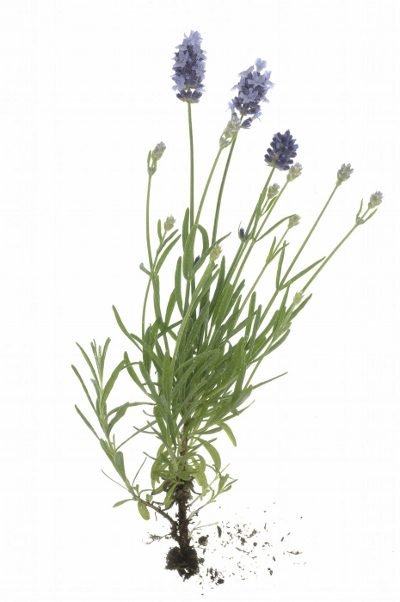Lavender Rights: The LGBTQ+ Community and Purple
Since the 1978 debut of the rainbow flag, the LGBTQ+ community has become unmistakably tied into the six stripes of colour that contribute to its formation. Although it should be acknowledged a recent redesign has incorporated the blue, pink, and white of the trans flag and lines of brown and black to represent the complex intersectional struggle of LGBTQ+ people of colour, the base rainbow made up of red, orange, yellow, green, blue, and purple, has been, and still is, internationally used in celebrations and protests as a symbol of pride. However, historically, homosexual men and women would have been more commonly associated with the colour purple. As female same-sex attraction was symbolised with violet, and male with lavender, purple was the collective colour to represent homosexuality in a less accepting era.
The origins of violets standing for the wlw (women-loving-women) community can potentially be traced back to what remains of Sappho’s poems. The poet, who’s work often featured female homosexual desire, has become a historical icon in the wlw community, becoming the namesake for the word ‘sapphic’, used to refer to sexual attraction and activity between women, and the term ‘lesbian’, originally only referring to the inhabitants of her home, lesbos. Despite heavily featuring the traditional rose and red to represent sexual desire and romance, her works also often mention purple (“come from heaven, wrapped in a purple cloak”) and flowers of purple (“even on the ground a purple flower”), notably the hyacinth (“Leda once found an egg – like a hyacinth”) and violet (“all the violet tiaras”). It is in these verses that the concept may have been plucked, to later be perpetuated and popularised.
Identifying Violets
Image Credit: The Wetlands blog
A key moment in the publicity of the motif can be traced to Édouard Bourdet’s 1927 play, ‘the captive’. The show depicts a wlw romance between the principal character, Irene, and her lover, Mme d’Aiguines, who never appears on stage, but displays her love for her partner through the delivery of violets. Unfortunately, extreme homophobic backlash led to the play’s eventual premature cessation, but supporters of the show continued to display their affection by pinning violets to their lapels. Further repetitions of the violet concept include the title “Muse of Violets” given to sapphic poet Renee Vivien, and Marlene Dietrich’s duet with Margo Lion, which describes how happy she was with her girlfriend, accentuated by violets on their lapels.
While violet represented women, lavender became the associated colour for men. As synthetic dyes in the 19th century, initiated by Perkin’s mauveine, became available to the masses, concerns over fashion choices and self-expression increased. Spearheaded in poetry by figures such as Oscar Wilde, and in art by the Pre-Raphaelite Brotherhood, the aestheticism movement, with its primary focus on beauty, gained momentum. the movement itself was denounced as effeminate, and with Wilde’s involvement, who was at the time was charged with ‘public indecency’, associated with homosexuality. Wilde’s writings of ‘purple hours’ continue the colour association with sexuality.
The specificity of lavender most likely comes from Abraham Lincoln’s biographer, who described a specific friendship of the former president as having a “streak of lavender, and spots soft as may violets.” The connotation of violets was well established, and thus, the colour, word, and flower of lavender became associated too. Terms such as ‘lavender lad’ for a gay man, and ‘lavender set’ for a group, were coined and used often in the 20th century. Furthermore, a ‘lavender marriage’, still sparingly used today, describes a marriage of convenience between one or more homosexual partners, undertaken to escape social stigma or legal repercussions associated with their sexuality.
Lavandula
Image Credit: Everything Lavender
The ‘lavender scare’ of post Second World War USA, fuelled by the ‘red scare’, a witch hunt against communism and communists during the cold war against the USSR, was an anti-gay movement playing on the fears of conservative Americans and their ideals. Homosexuality was deemed anti-capitalist, unnatural, and against God, thus receiving similar vitriol from the public as communism. But despite the derogatory connotations of ‘lavender’ imposed onto the gay community by an unaccepting society, there are instances of attempts to reclaim the symbol in acts of pride. For example, ‘The Lavender Song’ from the German cabaret in 1920, proudly sang about their gay relations as ‘lavender nights’, an early step in the long fight for equality.
Whether used against or by the community, purple, particularly during the late 19th - early 20th century, was the colour most used to represent LGBTQ+ people. From origins as ancient as Sappho, the history of its symbolism is long and complex and should be appreciated in the context of the laborious fight for LGBTQ+ acceptance and rights. Before there was access to the community and supportive resources available today, before there was the rainbow flag and symbolism we have, there was purple.
Lavender Woman
Image Credit: JSTOR
Sources
Bernstein, Samuel. "Lavender lads bartone babes: long before 'outing,' Confidential magazine was printing gay rumors about the stars--without wrecking careers. In writing about the tabloid, Samuel Bernstein wonders: was '50s America more tolerant than we think?" The Advocate, no. 980, 27 Feb. 2007, p. 22. Gale Academic OneFile, link.gale.com/apps/doc/A159593355/AONE?u=ed_itw&sid=bookmark-AONE&xid=0f777db8. Accessed 12 Oct. 2024.
https://daily.jstor.org/four-flowering-plants-decidedly-queered/.
Inness, Sherrie A. “Who’s Afraid of Stephen Gordon?: The Lesbian in the United States Popular Imagination of the 1920s.” NWSA Journal, vol. 4, no. 3, 1992, pp. 303–20. JSTOR, http://www.jstor.org/stable/4316217. Accessed 12 Oct. 2024.
https://botanicgardens.uw.edu/about/blog/2021/12/21/queer-botany-the-sapphic-violet/.
Plants That Can Symbolize LGBTQIA+ Pride -https://discoverandshare.org/2024/06/25/lgbtqiaplants/#:~:text=While%20a%20rainbow%20often%20represents,heterosexuality%20and%20the%20gender%20binary.
Two Poems by Sappho - https://webspace.ship.edu/cgboer/sappho.html.
Sappho (630 BC–570 BC) - Poems and Fragments - https://www.poetryintranslation.com/PITBR/Greek/Sappho.php.
Images
https://wildeastdevon.wordpress.com/2020/04/20/identifying-violets/
https://everything-lavender.com/lavandula.html#google_vignette
Margaret, et al. “Lavender Woman.” Lavender Woman, vol. 1, no. 1, Nov. 1971. Sallie Bingham Center for Women’s History and Culture, Duke University. Independent Voices. Reveal Digital, JSTOR, https://jstor.org/stable/community.28039102. Accessed 12 Oct. 2024.


